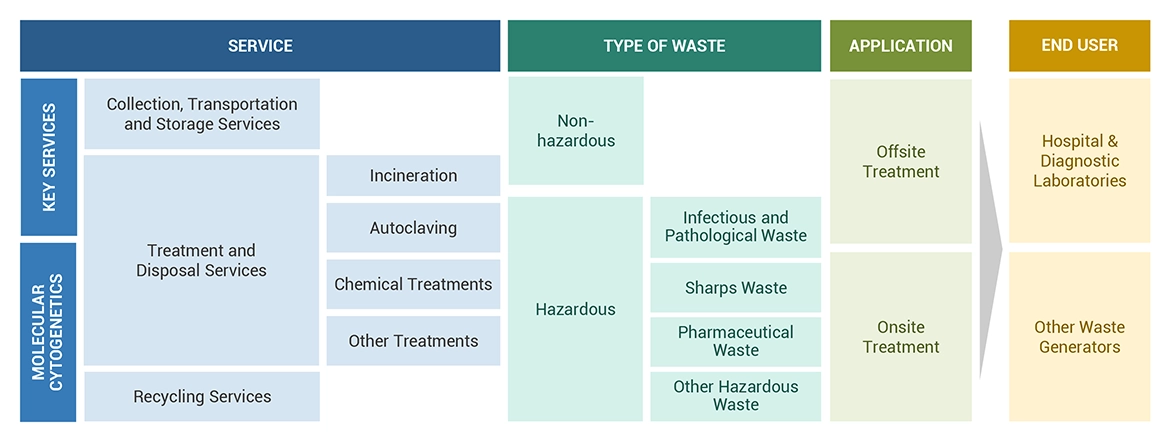Medical Waste Management Market: Growth Trends, Challenges, and Future Opportunities
Medical Waste Management Market: Growth Trends, Challenges, and Future Opportunities
Blog Article
The global medical waste management market is experiencing significant growth, driven by the increasing volume of healthcare waste and stringent regulatory frameworks. Valued at approximately $8.9 billion in 2022, the market is projected to reach $12.2 billion by 2028, reflecting a Compound Annual Growth Rate (CAGR) of 5.9%.
Download PDF Brochure

Key Market Drivers
- Rising Volume of Healthcare Waste: The expansion of healthcare facilities, including hospitals, laboratories, and research centers, has led to a substantial increase in medical waste generation. This surge necessitates efficient waste management solutions to ensure environmental safety and compliance with health regulations.
- Stringent Regulatory Requirements: Governments worldwide are implementing rigorous regulations to manage medical waste effectively. These policies mandate proper segregation, treatment, and disposal of hazardous and non-hazardous waste, compelling healthcare providers to adopt comprehensive waste management practices.
- Technological Advancements in Waste Treatment: Innovations such as incineration, autoclaving, and recycling technologies have enhanced the efficiency of medical waste disposal. These advancements not only reduce environmental impact but also offer cost-effective solutions for waste management.
Emerging Trends
- Adoption of Sustainable Practices: There is a growing emphasis on eco-friendly waste management solutions. Healthcare facilities are increasingly adopting practices that minimize environmental footprints, such as recycling and the use of biodegradable materials.
- Outsourcing Waste Management Services: Many healthcare providers are partnering with specialized waste management companies to handle their medical waste. This trend allows facilities to focus on core medical services while ensuring compliance with waste disposal regulations.
Regional Market Insights
- North America: This region holds a significant share of the medical waste management market, attributed to a well-established healthcare infrastructure and strict regulatory policies. The increasing number of surgical procedures and a growing geriatric population further drive market growth.
- Asia-Pacific: Projected to exhibit the highest growth rate, the Asia-Pacific region is witnessing rapid healthcare sector expansion. Factors such as increasing healthcare investments, rising patient population, and growing awareness about medical waste management contribute to this trend.
Challenges
- High Capital Investment: Implementing effective medical waste management systems requires substantial financial resources. The costs associated with advanced treatment technologies and compliance with regulatory standards can be a barrier, especially for smaller healthcare facilities.
- Lack of Awareness and Training: Inadequate knowledge about proper waste segregation and disposal methods among healthcare workers can lead to improper handling of medical waste, posing health and environmental risks.
Request Sample Report
Growth Opportunities
- Investment in Research and Development: Continuous R&D efforts are essential for developing innovative waste treatment technologies. Advancements in this area can lead to more efficient, cost-effective, and environmentally friendly solutions.
- Strategic Collaborations and Partnerships: Collaborations between healthcare facilities and waste management service providers can enhance operational efficiency. Such partnerships enable access to specialized expertise and resources, ensuring compliance and sustainability.
Conclusion
The medical waste management market is poised for substantial growth, driven by increasing healthcare waste volumes, regulatory pressures, and technological innovations. While challenges such as high capital investments and awareness gaps exist, they also present opportunities for industry stakeholders to develop cost-effective and sustainable solutions. Focusing on research and development, embracing sustainable practices, and fostering strategic partnerships will be crucial for navigating this dynamic landscape successfully. Report this page